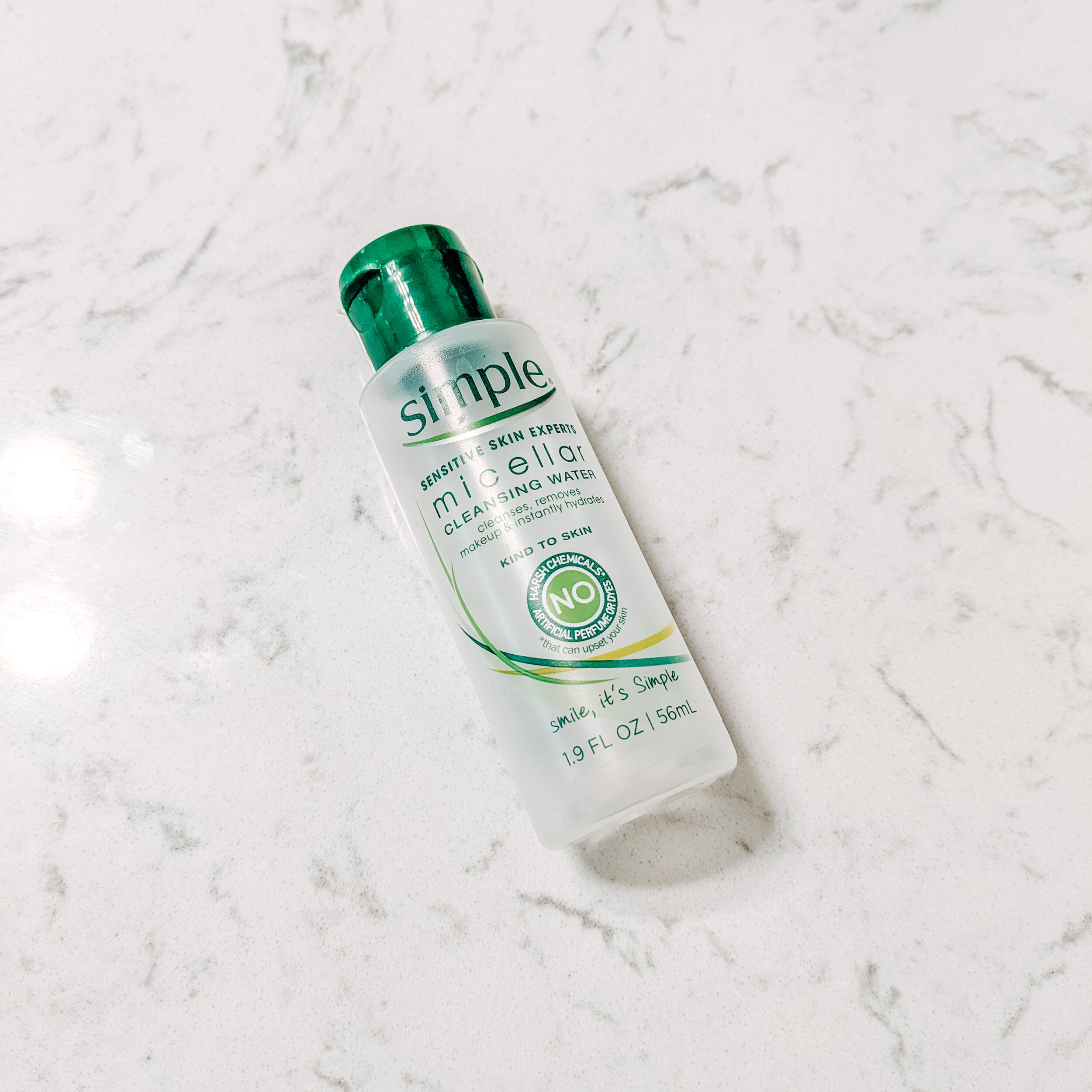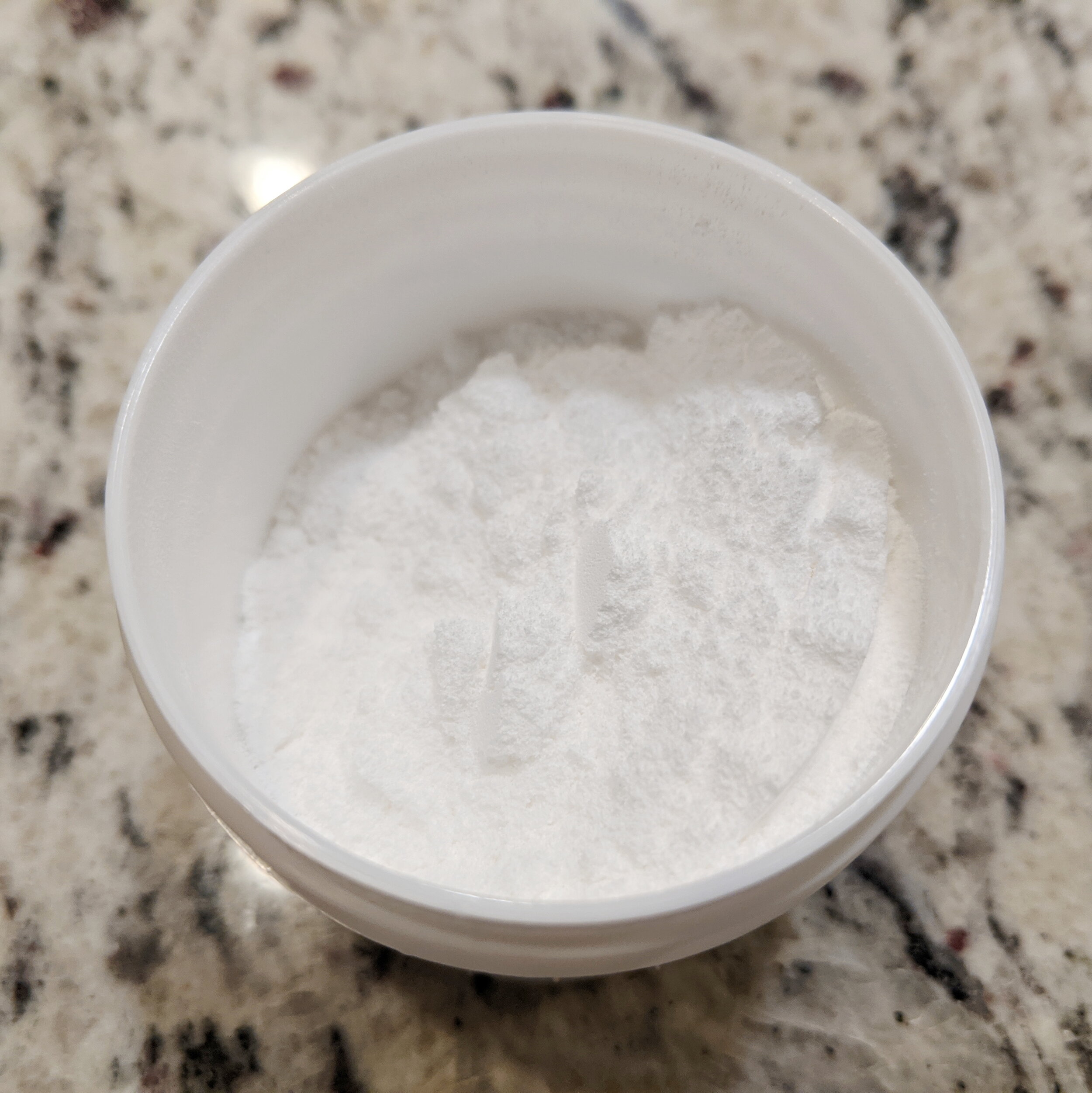Recently I decided to start my skincare routine from scratch so that I can better understand what products work better for me over others. To be frank, I never really took a scientific approach to it because my skin needs little maintenance overall (thanks genetics!). It definitely can use some improvements, though. Sometimes I have little spots of hyperpigmentation on my face and my nose can get pretty oily or flaky. The skin on my cheeks and forehead are the most low maintenance parts of my face, but I do think they could brighten up a bit!
I purchased Lab Muffin’s skincare book to see her suggestions on having a proper skincare routine. (Support scientific skincare and check out her book! I highly recommend it!) She suggests starting with only moisturizer and cleanser the first week, then adding an SPF, then slowly starting to add products to your routine one-by-one over the course of several weeks.
I followed her plan and have ended up with a few empties. Overall I’ve noticed that my nose is less flaky since I’ve been better about moisturizing (I used to be so lazy). Here is a list of empties that I’ve just gone through, with some commentary on their formulas:
Missha Essence Sun Milk SPF 50+/PA+++
I bought this because I’m a sucker for the Korean skincare hype (not for any scientific reason--just after working in Seoul, I fell in love with their enthusiasm for skincare.) It’s most definitely not my favorite sunscreen because it feels a bit drying to me when applied on its own; I’m not surprised about this since the second ingredient on the list is denatured alcohol. What is nice about this product is that I think it pairs nicely with makeup. I never wear foundation, so this isn’t something I need. I prefer a more moisturizing sunscreen. It does feel nice in the summer since it isn’t super heavy.
Its top ingredient is from a plant called dwarf everlasts. I have no idea what those plants even are and what the extract is from (i.e. its stem, leaves, flowers). This is something I need to look more into. My knowledge on the efficacy and composition of plant extracts is wanting, but that’s the beauty of cosmetic science, right? Never-ending learning.
Would I purchase this again? Probably not. I’ll write about it in a separate post, but I’m now trying Black Girl Sunscreen SPF 30, and I like the formula so far!
INGREDIENTS: Helichrysum Arenarium Extract, Alcohol Denat., Ethylhexyl Methoxycinnamate, Octocrylene, Ethylhexyl Salicylate, Butylene Glycol, Butyl Methoxydibenzoylmethane, Methyl Methacrylate Crosspolymer, Silica, Althaea Rosea Root Extract, Bis-Ethylhexyloxyphenol Methoxyphenyl Triazine, Rosa Davurica Bud Extract, Portulaca Oleracea Extract, Nelumbo Nucifera Flower Extract, Aloe Barbadensis Leaf Extract, Abronia Villosa Leaf Extract, Cinchona Succirubra Bark Extract, Rhodiola Rosea Root Extract, Psidium Guajava Leaf Extract, Limonia Acidissima Extract, Camellia Sinensis Leaf Extract, Pueraria Lobata Root Extract, Diospyros Kaki Leaf Extract, Morus Alba Fruit Extract, Artemisia Princeps Leaf Extract, Cinnamomum Cassia Bark Extract, Chrysanthemum Indicum Flower Extract, Camellia Japonica Flower Extract, Prunus Mume Flower Extract, Calendula Officinalis Flower Water, Pelargonium Graveolens Flower Water, Salvia Officinalis (Sage) Water, Dimethicone, Nylon-12, Acrylates/C10-30 Alkyl Acrylate Crosspolymer, BHT*, Sodium Hydroxide, Betaine, Caprylyl Methicone, Methoxy PEG/PPG-25/4 Dimethicone*, Bis- PEG/PPG-20/5 PEG/PPG- 20/5 Dimethicone*, Caprylic/Capric Triglyceride, Disodium EDTA*, Caprylyl Glycol, Ethylhexylglycerin, 1,2-Hexanediol, Fragrance
*The original ingredient list read these ingredients as: “Bht,” “Peg,” “Ppg,” and, “Edta.” It’s a little of a pet-peeve of mine to see ingredient lists not properly capitalized.
INGREDIENT BREAKDOWN:
Plant Extracts: Helichrysum Arenarium Extract, Althaea Rosea Root Extract, Rosa Davurica Bud Extract, Portulaca Oleracea Extract, Nelumbo Nucifera Flower Extract, Aloe Barbadensis Leaf Extract, Abronia Villosa Leaf Extract, Cinchona Succirubra Bark Extract, Rhodiola Rosea Root Extract, Psidium Guajava Leaf Extract, Limonia Acidissima Extract, Camellia Sinensis Leaf Extract, Pueraria Lobata Root Extract, Diospyros Kaki Leaf Extract, Morus Alba Fruit Extract, Artemisia Princeps Leaf Extract, Cinnamomum Cassia Bark Extract, Chrysanthemum Indicum Flower Extract, Camellia Japonica Flower Extract, Prunus Mume Flower Extract, Calendula Officinalis Flower Water, Pelargonium Graveolens Flower Water, Salvia Officinalis (Sage) Water
Solvents: Alcohol Denat.; Butylene Glycol; 1,2-Hexanediol*
*Typical solvent for preservatives
Sunscreens: Ethylhexyl Methoxycinnamate, Octocrylene, Ethylhexyl Salicylate, Butyl Methoxydibenzoylmethane, Bis-Ethylhexyloxyphenol Methoxyphenyl Triazine
Polymer: Methyl Methacrylate Crosspolymer
Texturizers: Silica, Nylon-12
Emollients: Dimethicone, Caprylyl Methicone, Caprylic/Capric Triglyceride
Emulsifiers: Acrylates/C10-30 Alkyl Acrylate Crosspolymer, Betaine, Methoxy PEG/PPG-25/4 Dimethicone, Bis- PEG/PPG-20/5 PEG/PPG- 20/5 Dimethicone
Antioxidant: BHT
pH Adjuster: Sodium Hydroxide
Chelating Agent: Disodium EDTA
Preservative: Caprylyl Glycol, Ethylhexylglycerin,
Fragrance
Versed Dew Point Moisturizing Gel-Cream
A very straightforward, Sepigel 305-based gel-cream. I think if you’re a budding cosmetic chemist/beginning formulator, this is an easy formula to learn how to deformulate.
I purchased this because I want to explore cheaper brands and my husband is a huge fan of gel-creams. Me? Not so much. And this gel-cream didn’t wow me much either. I definitely won’t purchase this again, but I’m glad I got it so I can use it as a teaching tool for my ecourse.
My issue with this formula is that it’s not moisturizing enough. (Are you starting to see a pattern in the types of formulas I like?) My husband and I like different textures when it comes to moisturizers--I love the after-feel of lots of glycols and emollients; I want to feel like something is left on my face. My husband prefers formulas with an almost matte dry-down.
Again, this would be a nice formula to pair with makeup since the dry-down after application is pretty quick in my opinion. It does get the job done when the weather isn’t blistering cold, but I definitely didn’t like this formula on colder days. It felt like my skin was drying up and I needed to reapply it.
INGREDIENTS: Water, Glycerin, Propylene Glycol, Squalane, Aloe Barbadensis Leaf Juice, Camellia Sinensis Leaf Extract, Simmondsia Chinensis (Jojoba) Seed Oil, 1,2-Hexanediol, Phenoxyethanol, Carbomer, Polyacrylamide, Triticum Vulgare (Wheat) Germ Oil, C13-14 Isoparaffin, Sodium Hydroxide, Sambucus Nigra Flower Extract, Laureth-7, Trisodium Ethylenediamine Disuccinate, Sodium Hyaluronate, Potassium Sorbate, Sodium Benzoate, Citric Acid
INGREDIENT BREAKDOWN:
Solvents: Water; 1,2-Hexanediol*
*Typical solvent for preservatives
Humectants: Glycerin, Propylene Glycol, Sodium Hyaluronate
Emollients: Squalane, Simmondsia Chinensis (Jojoba) Seed Oil, Triticum Vulgare (Wheat) Germ Oil
Plant Extracts: Aloe Barbadensis Leaf Juice, Camellia Sinensis Leaf Extract, Sambucus Nigra Flower Extract
Preservatives: Phenoxyethanol, Potassium Sorbate, Sodium Benzoate
Thickening Agent: Carbomer
Emulsifier: Sepigel 305 (Polyacrylamide, C13-14 Isoparaffin, Laureth-7)
pH Adjusting Agents: Sodium Hydroxide, Citric Acid
Chelating Agent: Trisodium Ethylenediamine Disuccinate
Simple Micellar Water
This is my when-I’m-lazy-and-don’t-want-to-wash-my-face “cleanser.” Micellar waters contain mild surfactants solubilized in water with other doo-dads. This formula contains a surfactant called PEG-6 caprylic/capric glycerides. Glycerides are gentler on the skin compared to sulfates (I don’t think you’d generally find sulfates in micellar water). The formula also contains cetrimonium chloride which is a cationic surfactant that attracts to the negative charges on skin (due to the positively charged cetrimonium) and “conditions” it. In other words, it helps to make this formula feel less harsh on skin when you use it to “cleanse” it.
I am a true sinner with this product--I use it to wipe off my liquid eyeliner (either Benefit’s Roller Liner or Em Cosmetics liner), my cheeks, my forehead, and then I’m done. Do I rinse? No. See? Fucking sinner. Perhaps I shouldn’t even purchase micellar water in the future because of how lazy it makes me.
(Note: Since I originally drafted this blog post a few weeks ago, I’m happy to say I’ve barely used it since then and have been much better at washing my face at the end of the day even though I’m so tired.)
INGREDIENTS: Aqua, Hexylene Glycol, Glycerin, Niacinamide, Panthenol, Chamomilla Recutita Flower Extract, PEG-6 Caprylic/Capric Glycerides, Butylene Glycol, Pantolactone, Cetrimonium Chloride, Tetrasodium EDTA, Citric Acid, Potassium Chloride, Sodium Ascorbyl Phosphate, Sodium Chloride, Dmdm Hydantoin, Iodopropynyl Butylcarbamate.
INGREDIENT BREAKDOWN:
Solvents: Aqua (Water), Hexylene Glycol, Glycerin
Vitamins: Niacinamide (B3), Panthenol (B5), Sodium Ascorbyl Phosphate (C)
Plant Extracts: Chamomilla Recutita Flower Extract
Surfactants: PEG-6 Caprylic/Capric Glycerides, Cetrimonium Chloride
Humectants: Butylene Glycol, Pantolactone
Chelating Agent: Tetrasodium EDTA
pH Adjuster: Citric Acid
Viscosity Adjusting Agents: Potassium Chloride, Sodium Chloride
Preservatives: DMDM Hydantoin, Iodopropynyl Butylcarbamate
Drunk Elephant Beste No. 9 Jelly Cleanser
I got this cleanser as a free sample, and I like it a lot. When I first started using it, it felt like it made my skin pretty dry. But as I got used to it, I didn’t feel like it’s as bad as, say, a sulfate-based cleanser. I felt like my skin was quite clean.
Drunk Elephant’s formulations, from what I’ve used, are pretty standard “natural” but nice formulas. They’re not innovative since they use the common “natural” ingredients offered by suppliers. As a brand, I’m starting to learn some questionable things about their ethics (and I just purchased their Protini Cream to deformulate, oops.) Perhaps in the future I won’t support this brand anymore, but for now, I think that learning how to de-formulate their products is good for formulation practice (minus all of the peptides they add which I have to research more about in terms of their efficacy).
From a formulation standpoint, I say most of the common “natural” ingredients here are propanediol (aka Zemea propanediol) and coco-glucoside. Propanediol is derived from corn and coco-glucoside is derived from coconut (the “coco” part of the name gives you the hint of its origin.)
INGREDIENTS: Water, Glycerin, Cocamidopropyl Betaine, Coco-Glucoside, Sodium Lauroyl Methyl Isethionate, Cocamidopropyl Hydroxysultaine, Sodium Methyl Oleoyl Taurate, Propanediol, Aloe Barbadensis Leaf Extract, Glycolipids, Linoleic Acid, Linolenic Acid, Lauryl Glucoside, Cucumis Melo Cantalupensis Fruit Extract, Sclerocarya Birrea Seed Oil, Dipotassium Glycyrrhizate, Tocopherol, Citric Acid, Phenoxyethanol, Sodium Hydroxide, Sodium Benzoate, Sodium Chloride, Polylysine
INGREDIENT BREAKDOWN:
Solvent: Water
Humectants: Glycerin, Propanediol
Surfactants: Cocamidopropyl Betaine, Coco-Glucoside, Sodium Lauroyl Methyl Isethionate, Cocamidopropyl Hydroxysultaine, Sodium Methyl Oleoyl Taurate, Lauryl Glucoside
Plant Extracts/Oil: Aloe Barbadensis Leaf Extract, Cucumis Melo Cantalupensis Fruit Extract, Sclerocarya Birrea Seed Oil
Skin Conditioning Agent: Glycolipids
Amino Acids: Linoleic Acid, Linolenic Acid, Polylysine
Soothing Agent: Dipotassium Glycyrrhizate
Antioxidant: Tocopherol
pH Adjusters: Citric Acid, Sodium Hydroxide
Preservatives: Phenoxyethanol, Sodium Benzoate
Viscosity Adjusting Agent: Sodium Chloride
I’ll write more about this later on, but I also recently incorporated The Ordinary’s Glycolic Acid Solution into my routine mostly for my oily nose. It’s worked great so far, but I’ve always been a fan of glycolic acid since I was a wee chemist.
What are you using now?
Hey, boosuke! Did you find something not factual in this blog post? Leave a comment and let me know! Although I teach a beginning cosmetic formulation course, I will never feel like a master in the craft of formulation. Why? Because I never want to stop learning. I prefer to be (kindly!) corrected so that I can keep improving my craft.
Be respectful in the comments. Cosmetic science has become a contentious topic over the years due to rampant misinformation perpetuated by the internet and ignorant/dishonest brands. Let’s facilitate friendly discussion and assume (at first) that everyone is coming from a good place.









